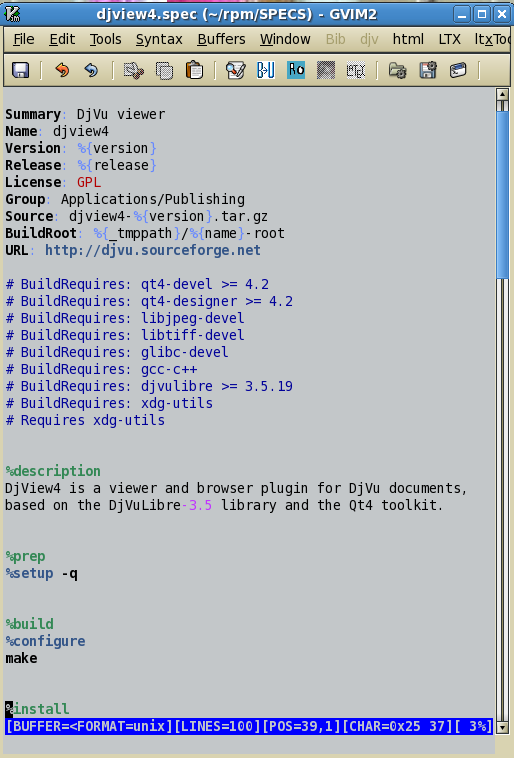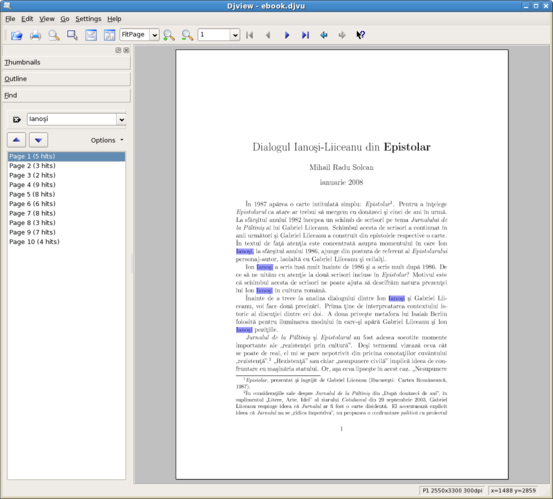
I think that DjVu is the ideal ebook format. DjVu makes a nice separation of image from text. This is especially good with scanned books; djvu makes accessible the actual image of the pages of the books. The text is placed behind the image, making searches possible.
DjVuLibre is the open source version of DjVu. On Fedora 7, I use the 3.5.19 version of DjVuLibre. It includes a rather simple viewer.
Now, a better DjVu viewer is available under the name of DjView4. I have first remarked it in Ubuntu. Then I tested the possibility to build an rpm under Fedora 7.
I have downloaded the source djview4-4.4.tar.gz. Inside the archive you find the spec file that you need in order to build the rpm (see the image).

There were no special problems with the build. I had only to unset the QTDIR variable. Check to see the unswer to
echo $QTDIR
In my case, I had to unset the variable, because it pointed to Qt3. DjView4 is Qt4 based.
In the screenshot, one can see the actual look of DjView4.

From my point of view, there are three main advantages in DjView4:first, it searches the text (if it is available); second, it displays the outline of the e-text (DjView3 didn't do this); third, it shows in the bottom-right corner the position of the cursor on the image.
For other features see the page of the DjView4 Project.
Binary packages are available for Debian-based GNU/Linux distributions and Windows on the page of the DjView4 Project.
I have even teste DjView4 for Windows under Wine, on Fedora 7, and it works very well. Even under Wine, djvu files are loaded faster than other e-books.